Up until a couple years ago, I honestly never gave much thought to the furniture around me; though I might notice the fabric color or cleanliness, it never occurred to me to wonder how exactly it was put onto the piece I was sitting on. As with most things, a little bit of knowledge opened up my world and now I can't walk into a room without noticing the furniture upholstery and how its put together. So that you too can take a peek into this world, I've put together a photo diary showing the different elements of a sectional piece and how its recovered.
Follow me to the land of loose tacks, welting, ribbons, and staples. . .
This is the piece just as we're starting to take it apart. The old fabric was stained in many places and starting to sag; we'll be replacing it with the same pattern. When taking apart a chair, you always work in the reverse order from how the upholstery was put on. In this case, we've started by taking off the cambric on the bottom, then will be the outside back, the ribbon around the sides and front, the inside back and finally, the seat. The only tools required are a staple puller (pictured on the saw horse) and some muscle.
With the fabric removed and all of the staples pulled, the sectional is ready to be recovered. This sectional was put together in a way that I've usually only seen with antique chairs. There are grooves in the frame between each of the different parts of the sectional into which the pieces of fabric should be stapled. When all of the pieces of fabric are stapled on, then welting is glued into the grooves to hide the staples and finish the piece. Because this customer specifically asked that the welting not be glued, I'll be attaching the fabric in the more usual way and not utilizing the grooves.
I often cut out all of my fabric pieces first before attaching anything to the furniture. Including the welting, this sectional has only five pieces of fabric that I'll need to cut out. I usually take my measurements from the furniture itself, but also keep the old fabric as a reference in case I need to use it as a pattern, or refer to it to see how it was folded or cut.
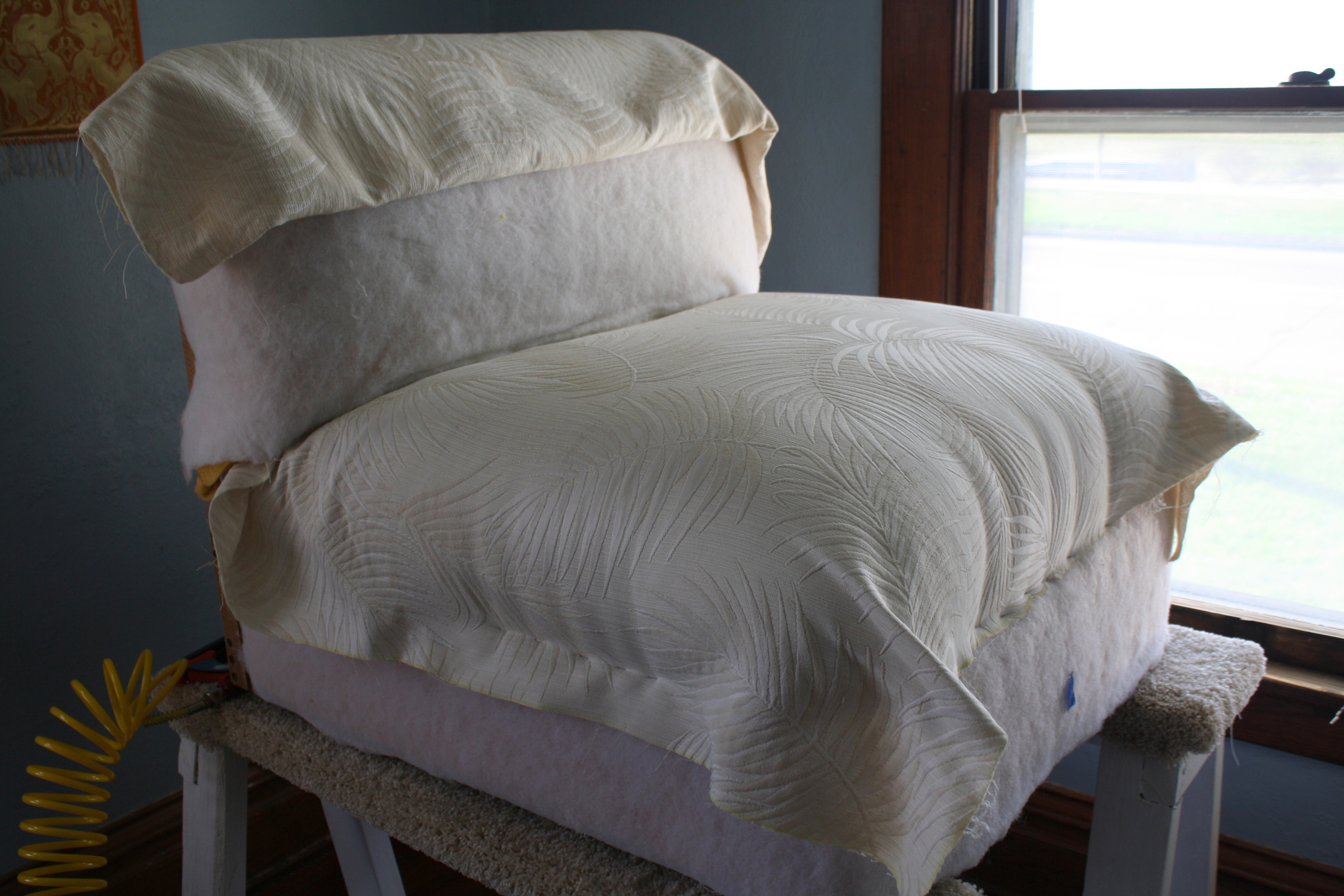
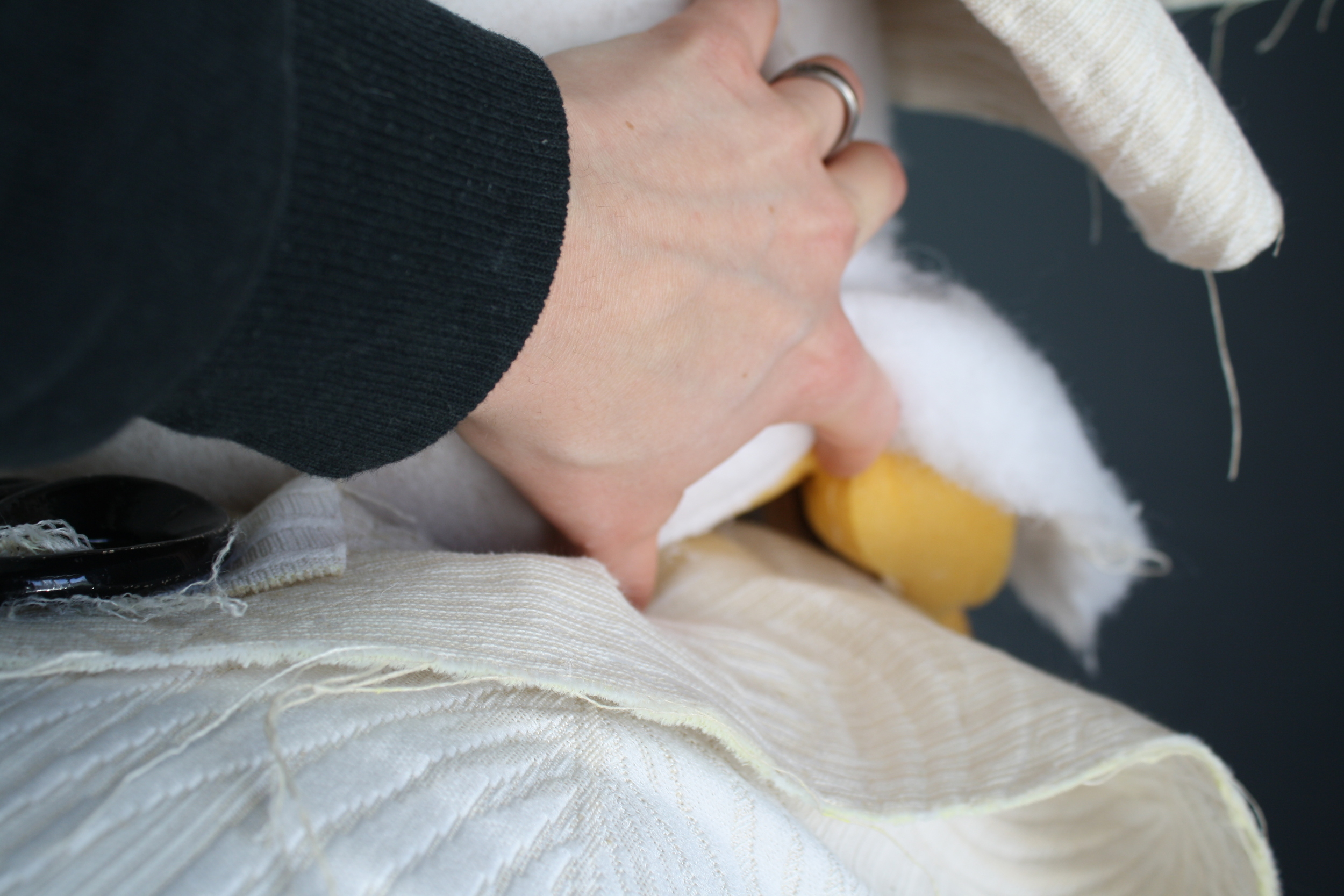
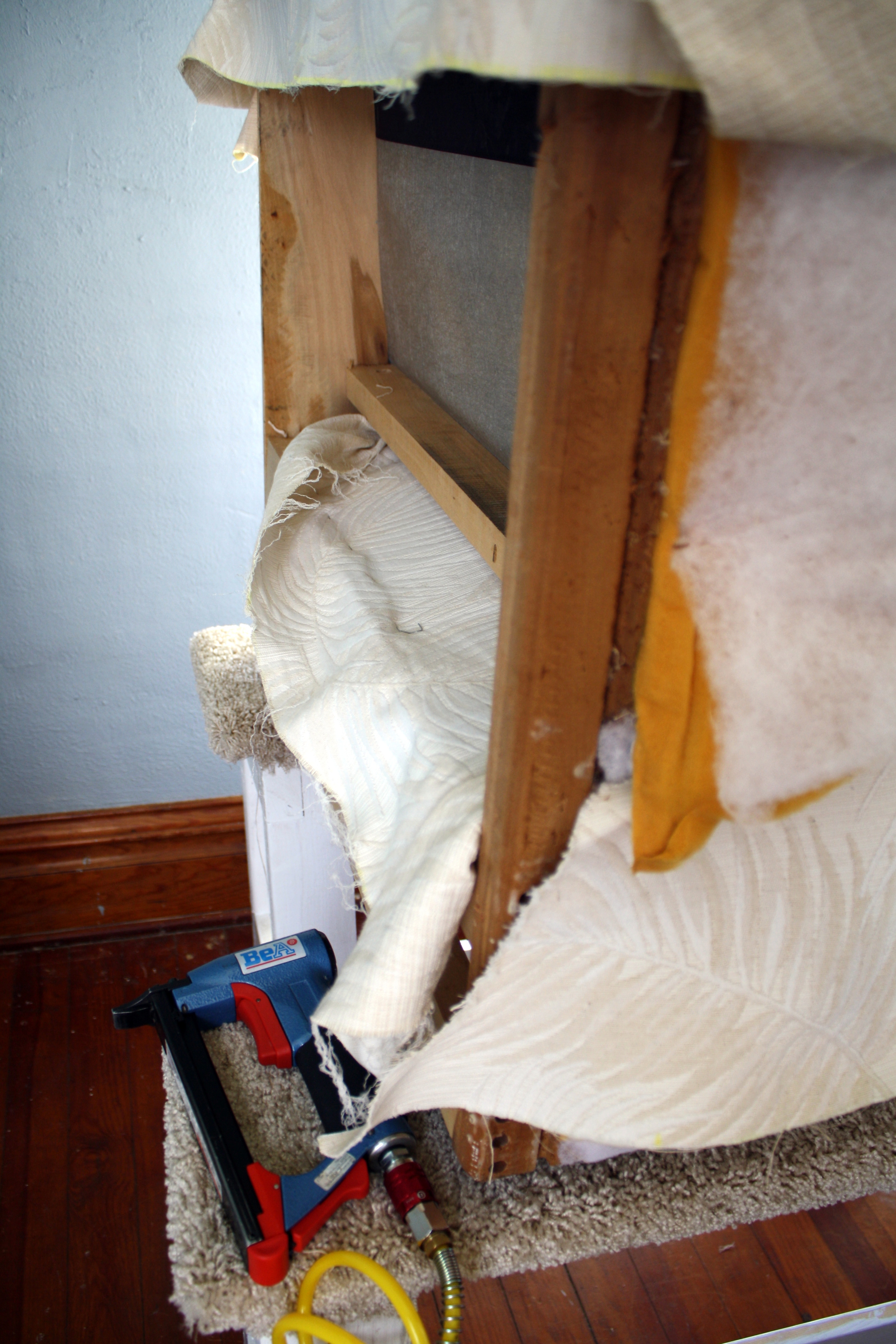
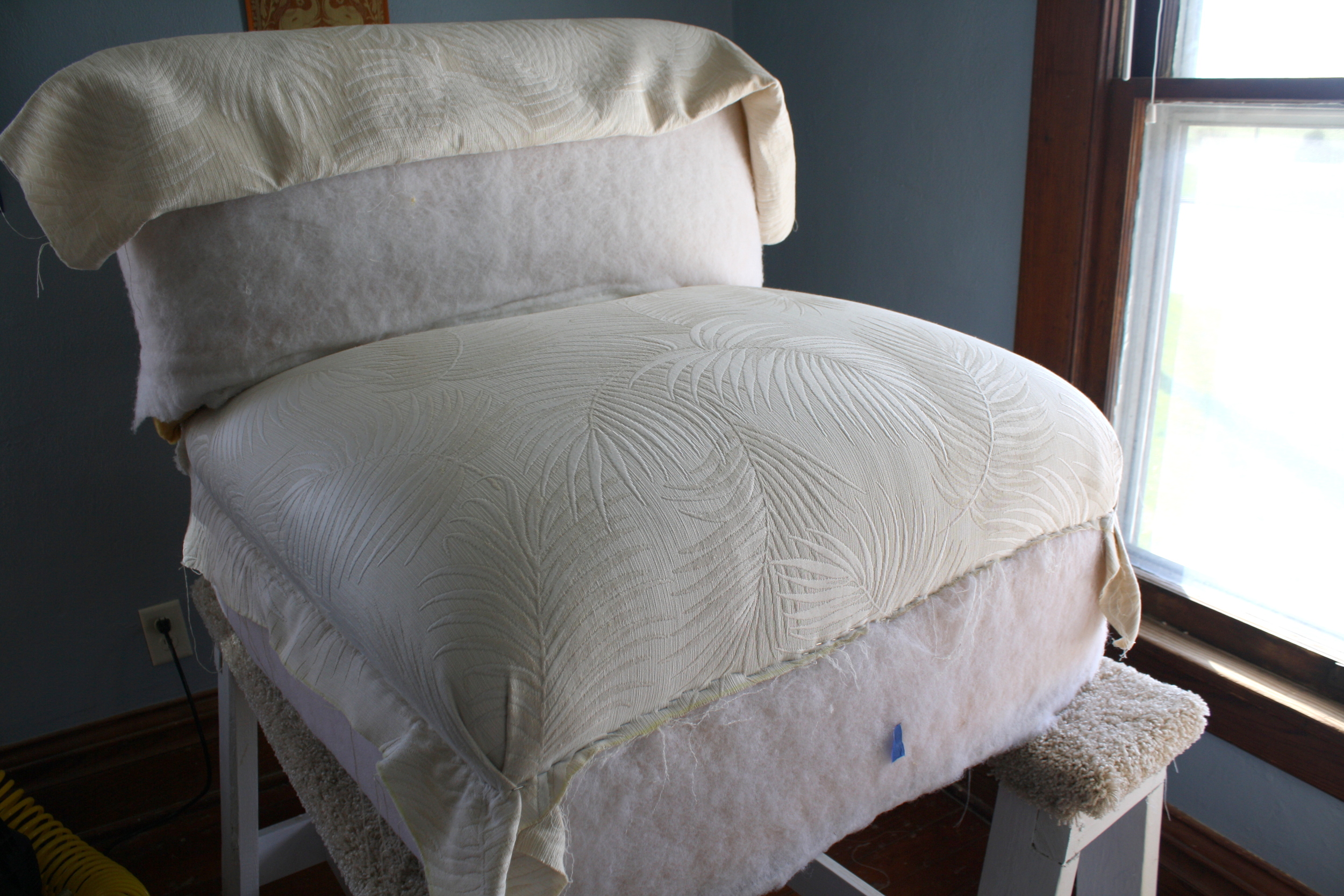
The first stage of covering any piece of furniture is to attach the seat or deck fabric. When attaching any piece of fabric, the first rule is to center it, the second is to start in the middle and work towards the corners, the third rule is Newton's third law (every action should have an equal and opposite reaction; i.e. put a staple in the front, then a staple in the back using equal pressure and pull; then on each side, etc.) and the fourth rule is that you'll inevitably have to take some of your staples out, and that's just the nature of the work. Making clean and concise corner cuts and ensuring that all of the fabric is pulled evenly adds some complexity to putting on all pieces of fabric, including the deck.
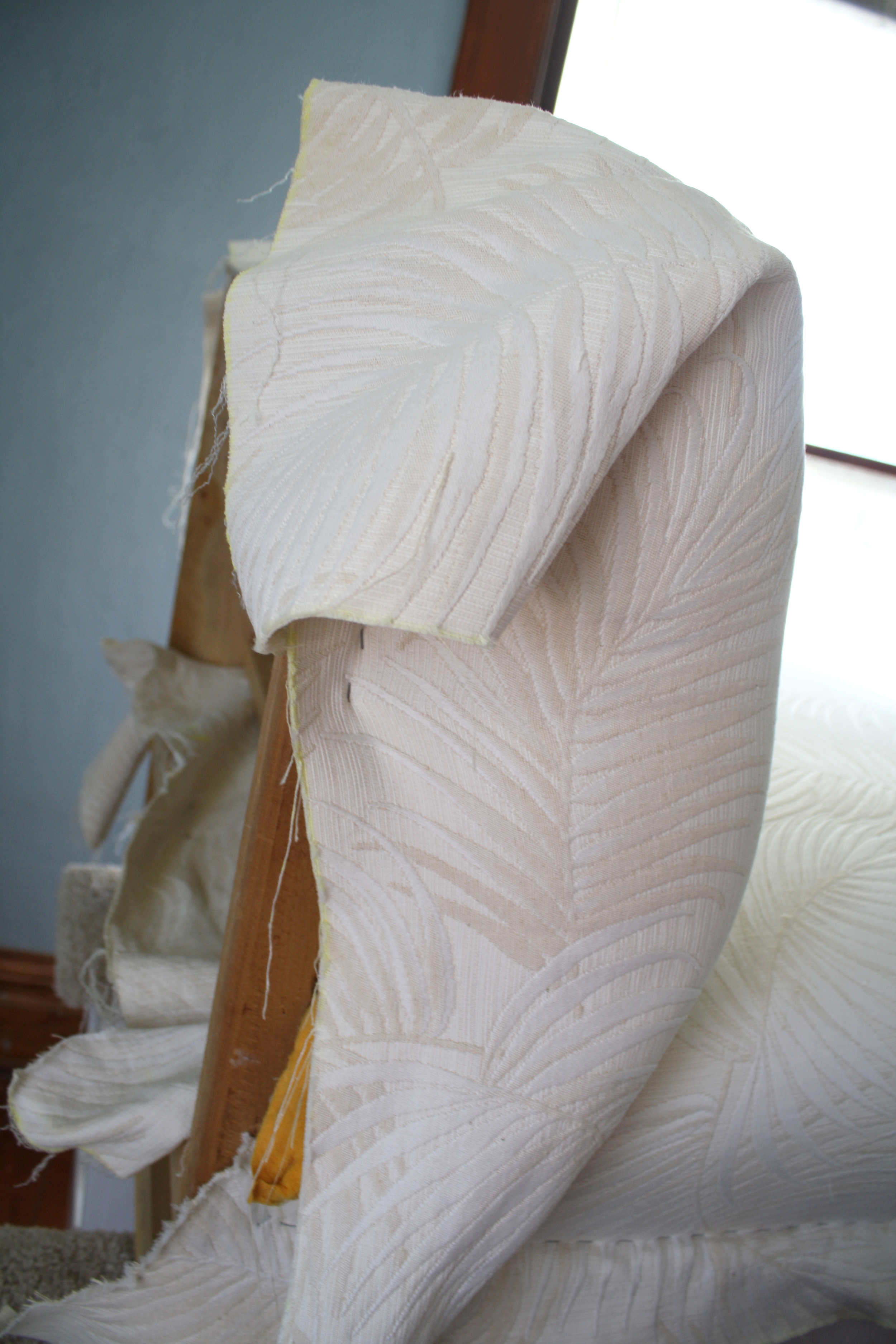

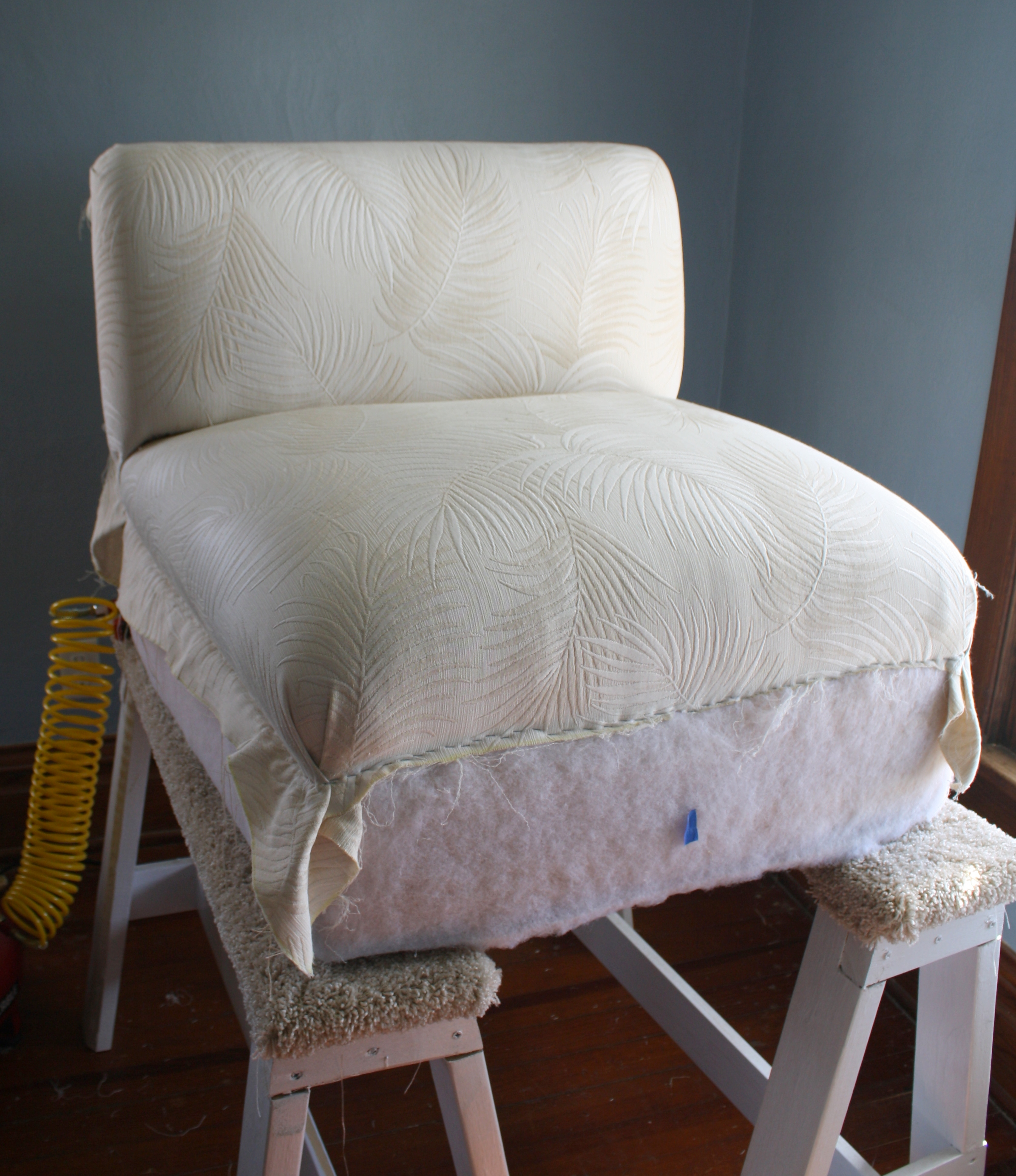
The next stage is to attach the inside back. This goes on in much the same way as the seat with folds at the top and corner cuts on the bottom.
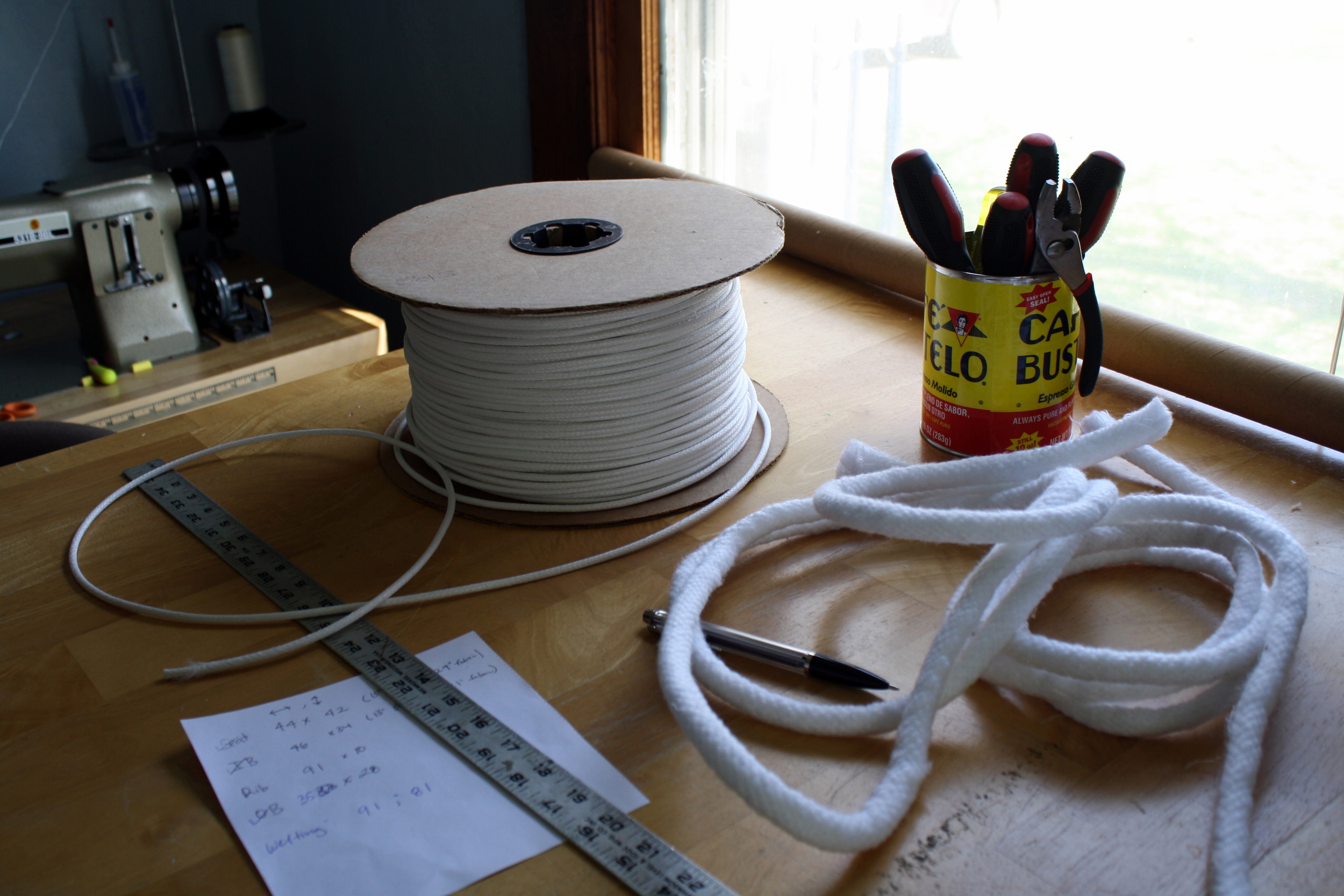
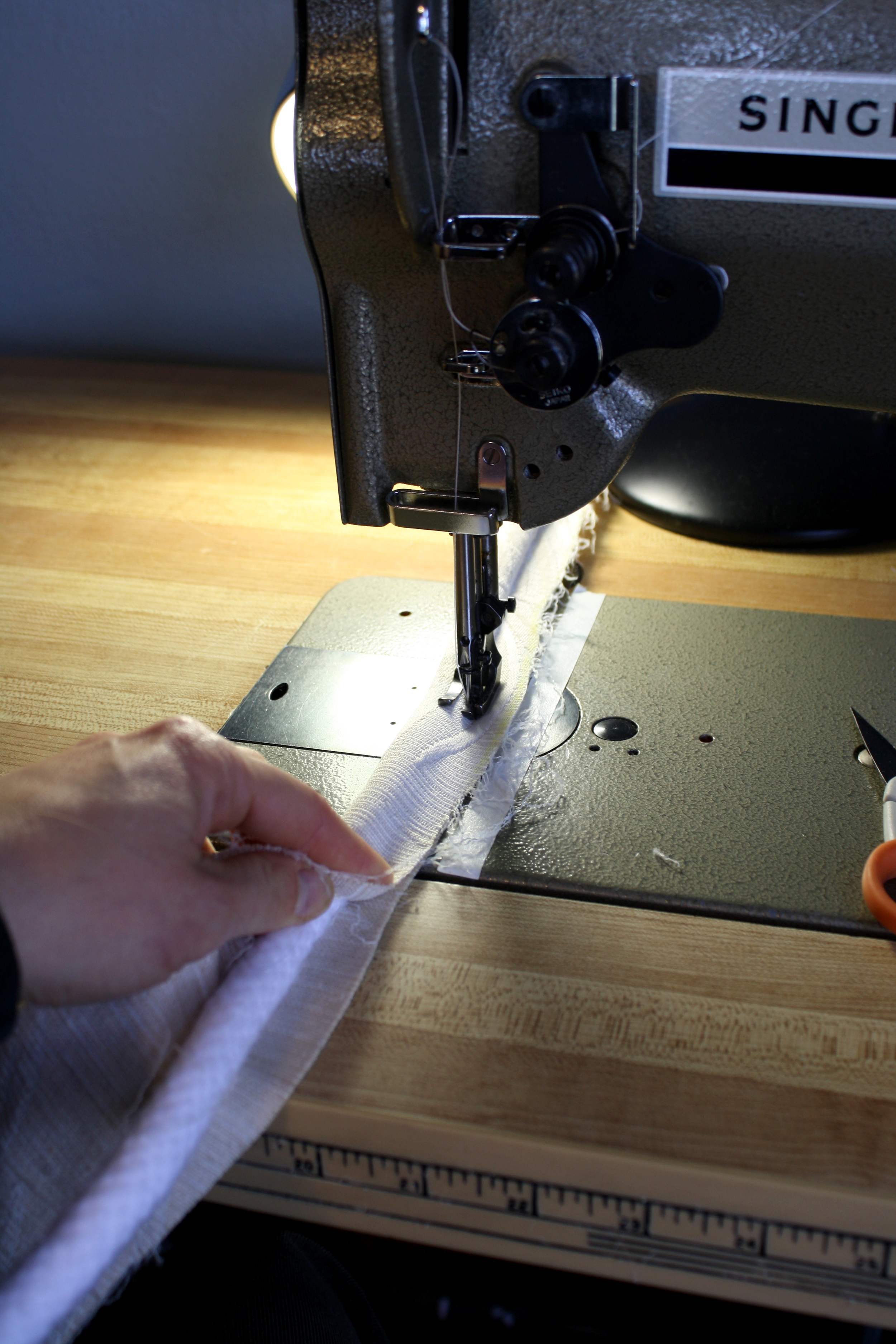
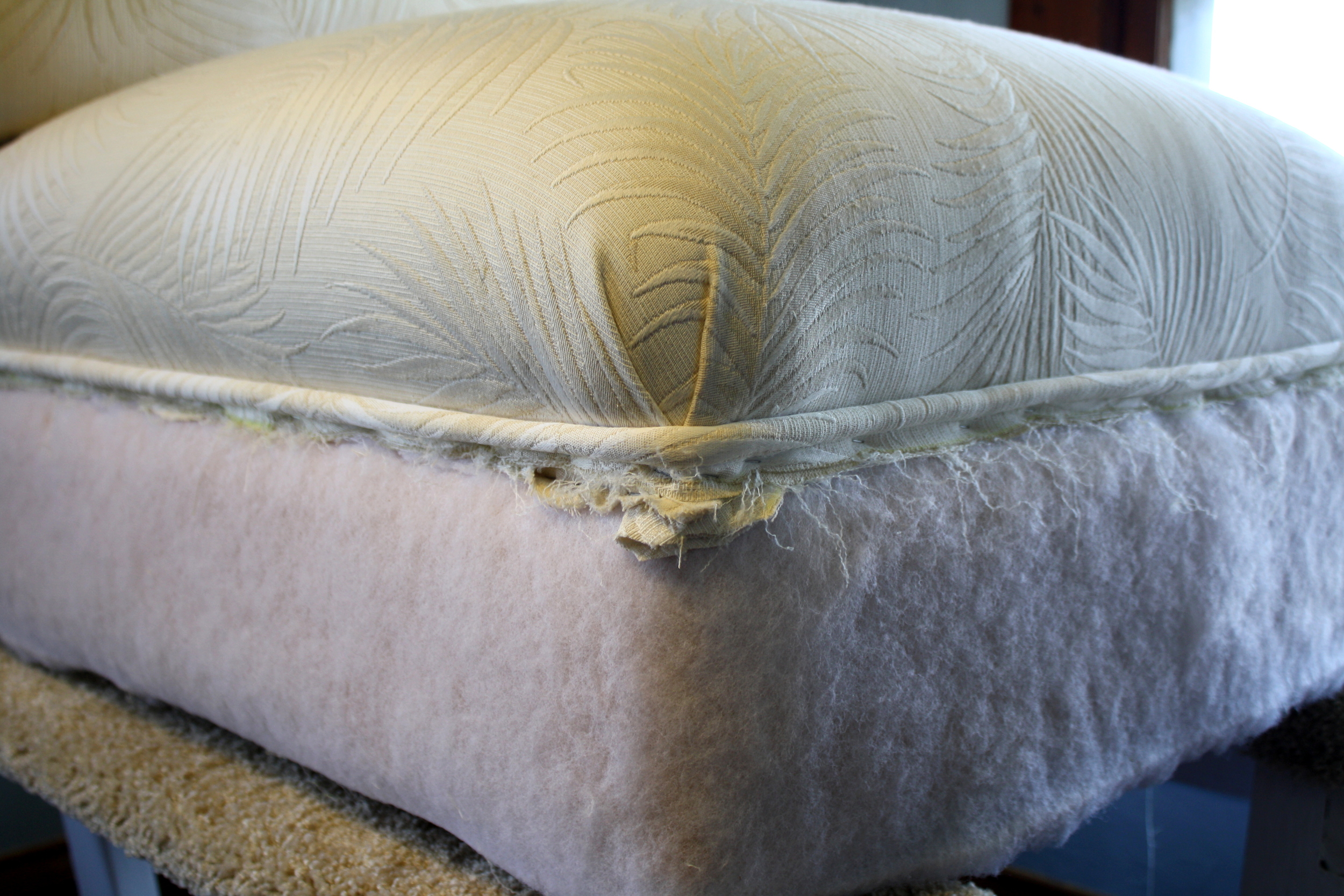
Welting is the decorative cording that you will find on most pieces of furniture (once you know what to look for, you'll see it everywhere). This piece utilized a particularly large type of welting around the front and sides and the outside back. Often the welting may be sewn on to other pieces, such as a front ribbon; however, in this case, since the welting was so large and cumbersome to sew, I instead stapled it onto the piece.
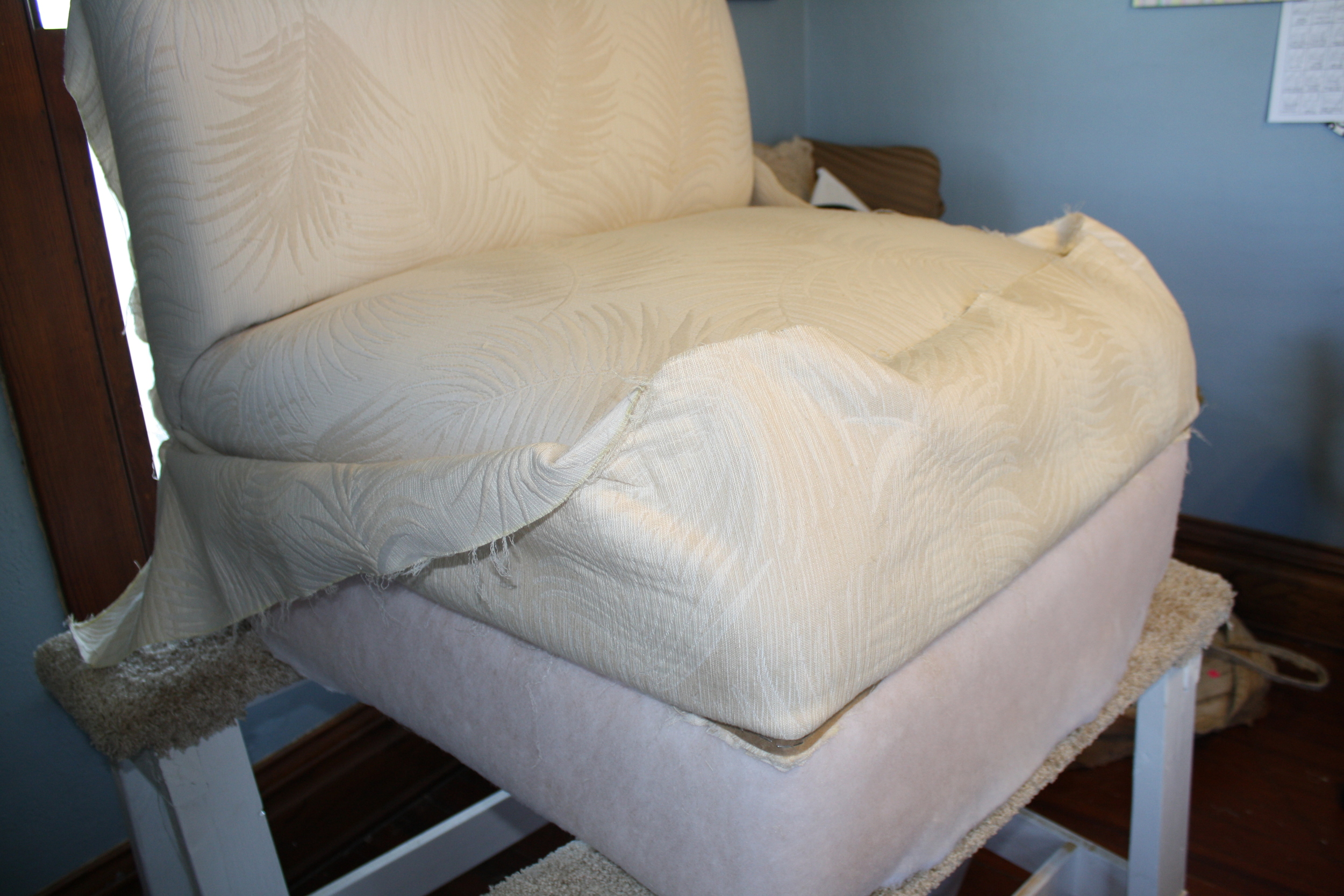
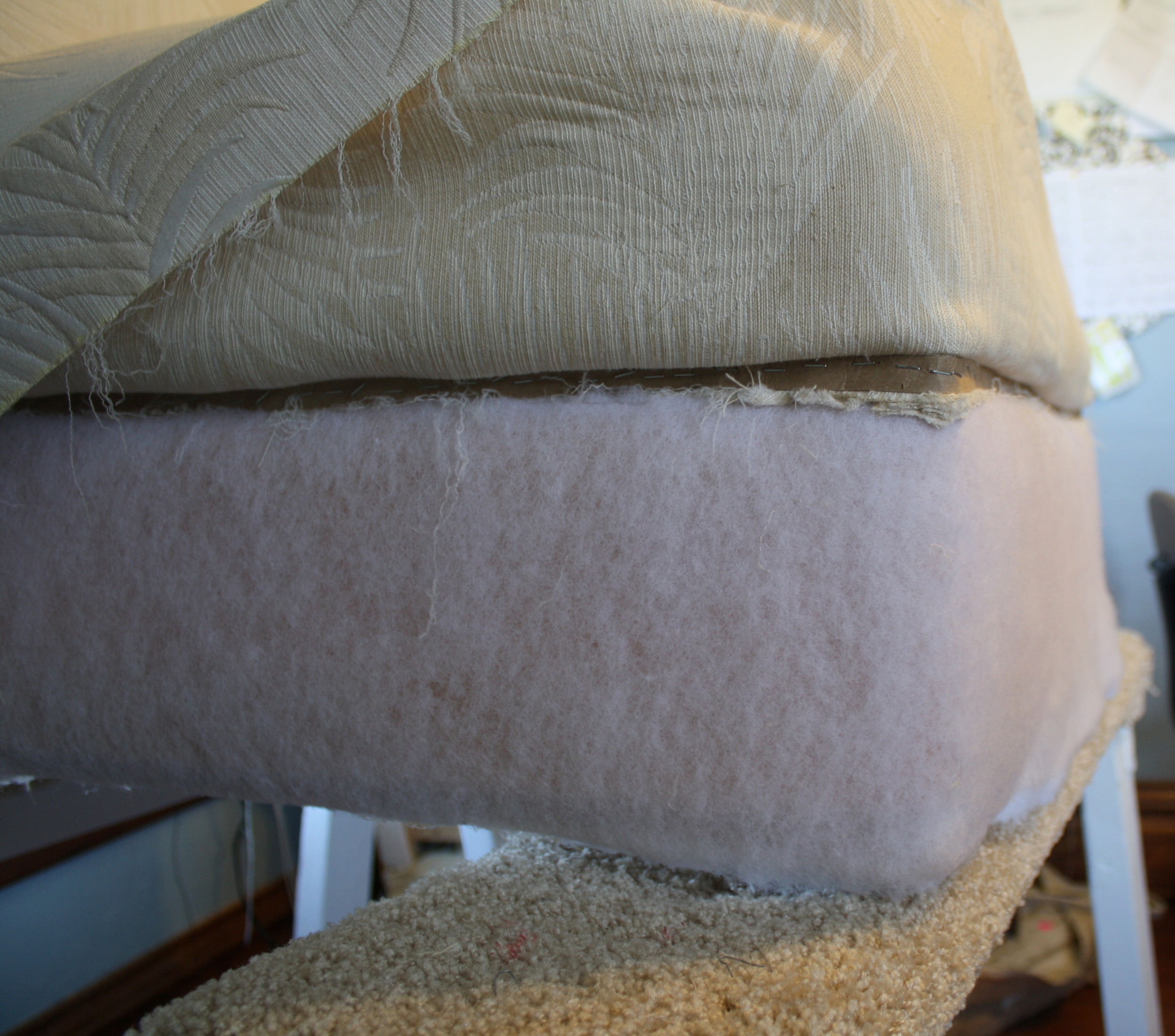
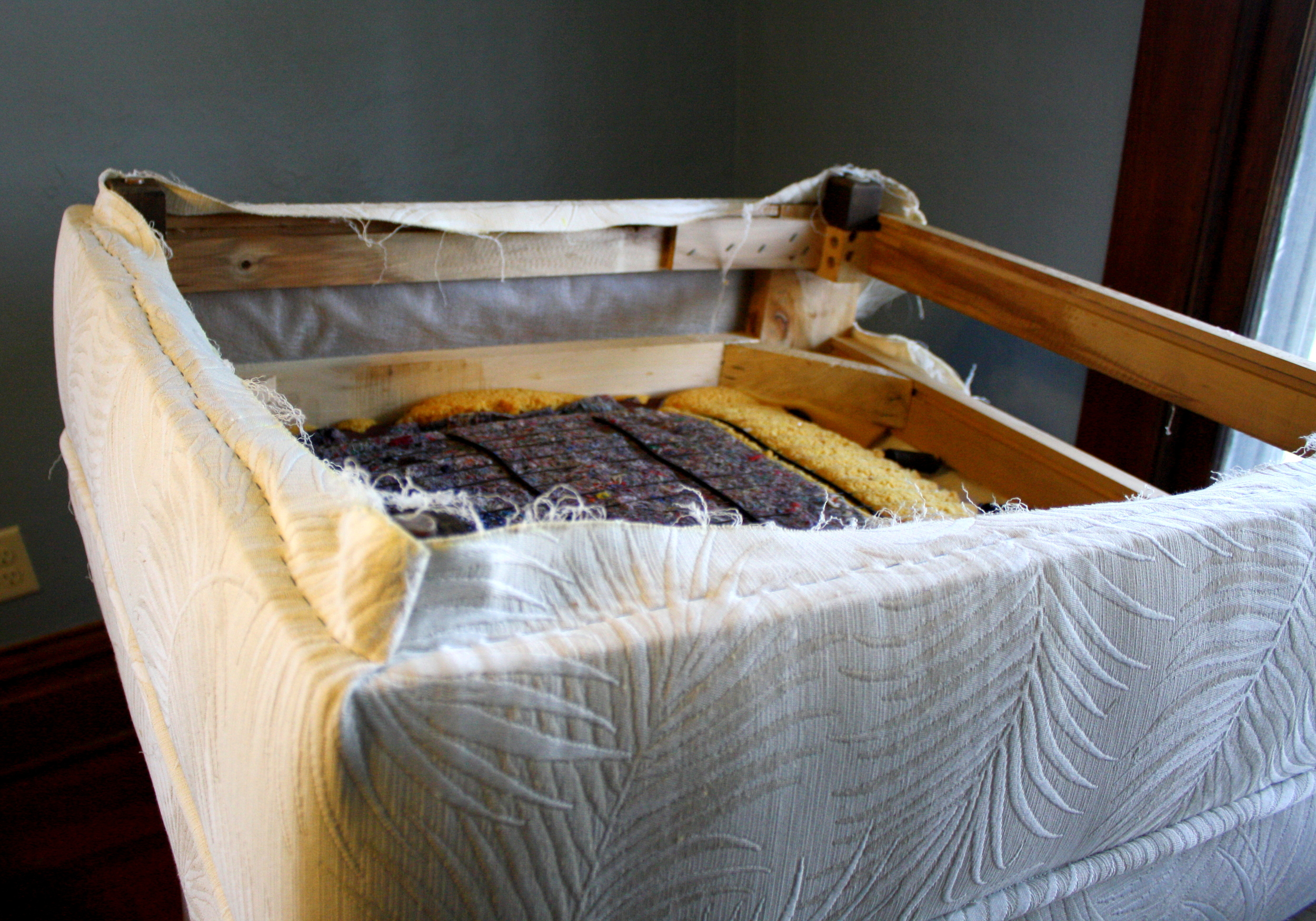
After the welting around the seat is attached, the ribbon around the front and sides goes on next. To achieve the finished top edge on the ribbon, a cardboard tacking strip is stapled on top of the underside of of the ribbon and ideally, fitted snugly up against the cording. The ribbon is then pulled down and the bottom is stapled to the underside of the sectional.
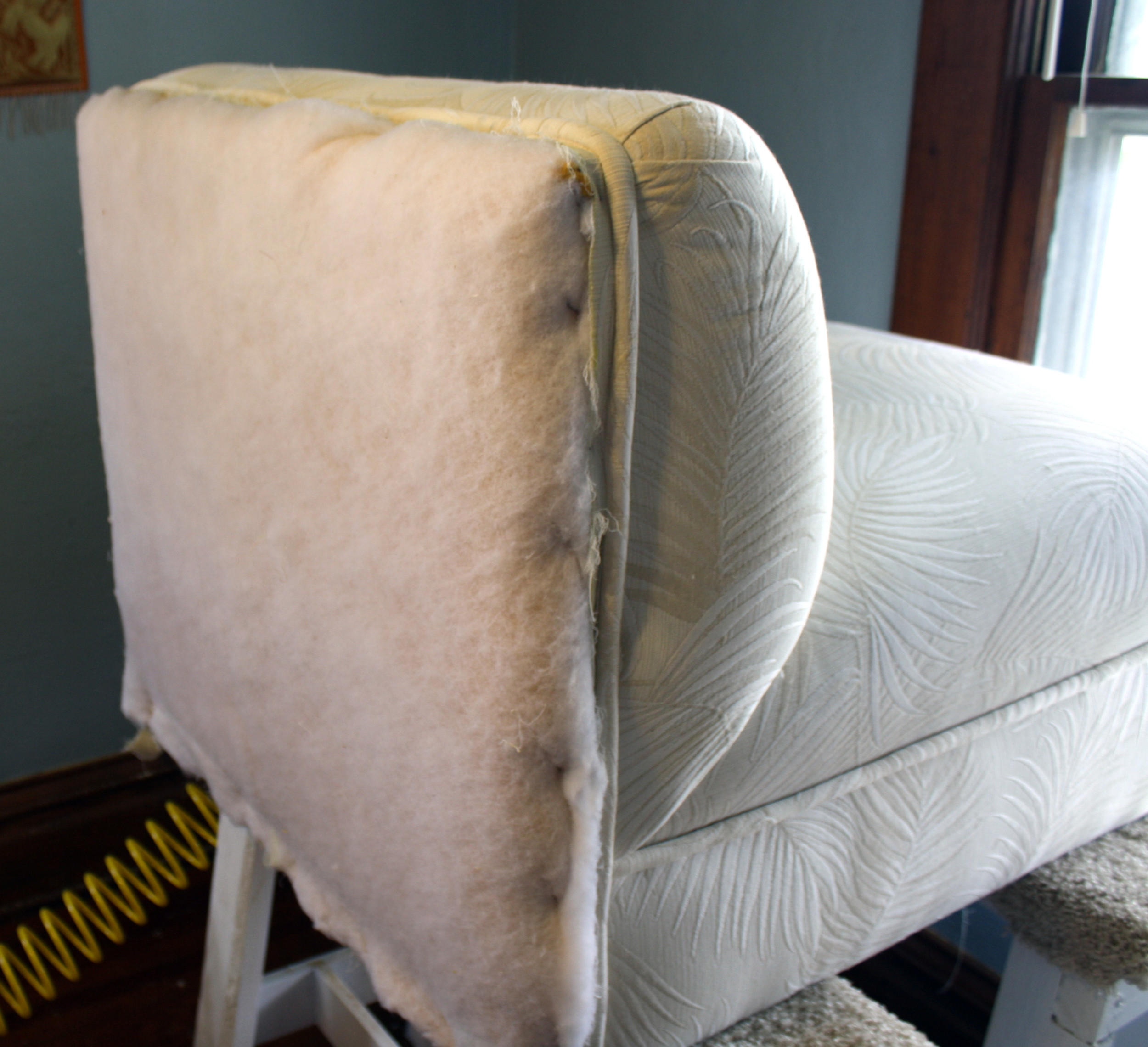
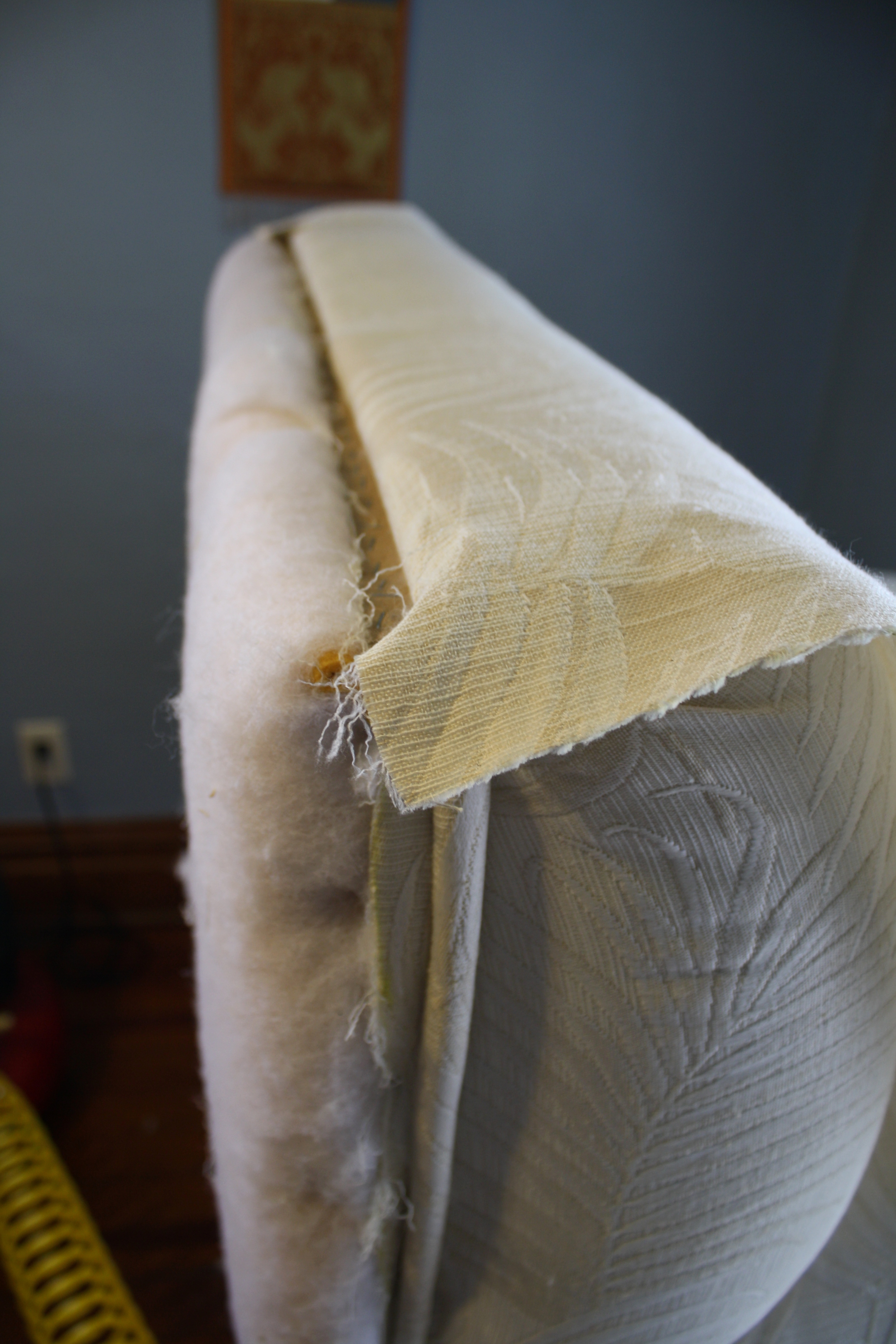
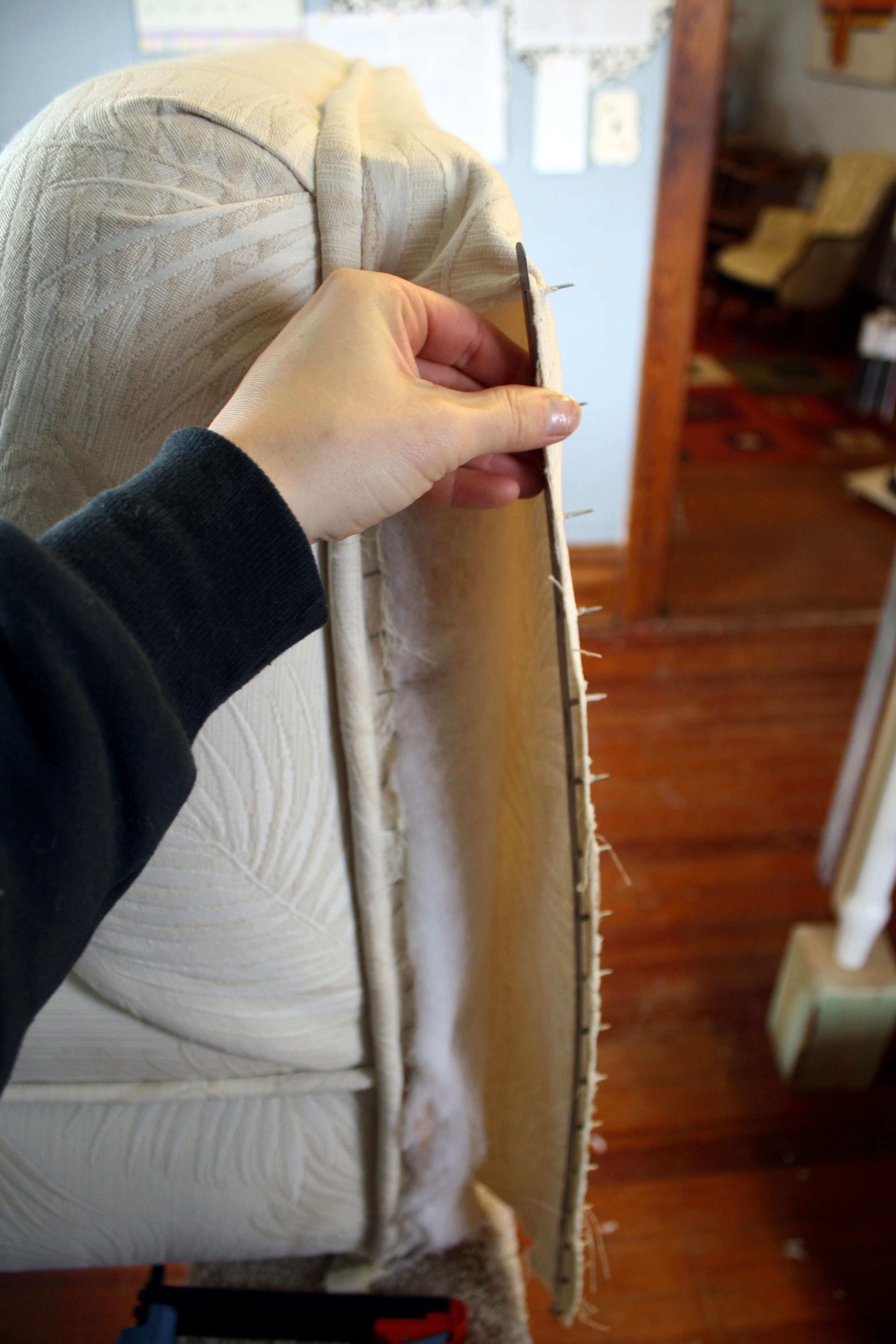
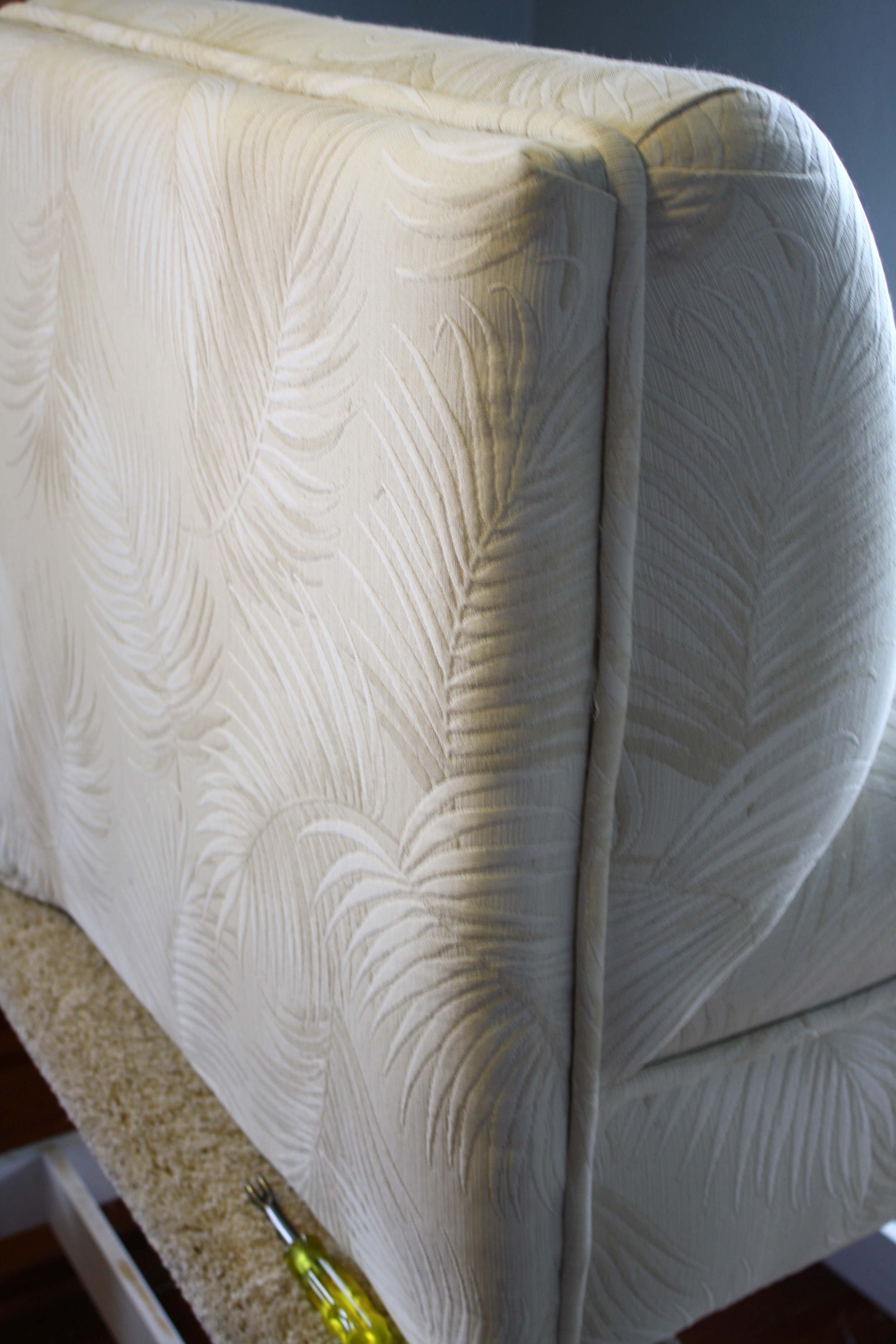
The outside back is the last piece of fabric to attach and will hide all of the raw edges and staples that are still visible on the chair. A cardboard tack strip is once again used on the top and metal tack strips are used on each side to achieve a finished edge; the bottom is pulled under the chair and stapled. Of all of the pieces, outside backs take the most patience and care. It can take a few rounds of trial and error to get the tack strips positioned correctly so that they'll exert the amount of pull needed and when folded over and driven home, will be placed snugly against the welting.
And finally, after attaching cambric on the bottom (not pictured), the piece is finished!















